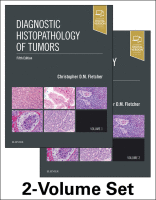Physical Address
304 North Cardinal St.
Dorchester Center, MA 02124

Classification and General Features The classification and nomenclature used in this chapter are based on those proposed by the World Health Organization (WHO) in 2017 and 2019. Its premise is that the cellular phenotype of the tumors of the pancreas…

Liver Benign Hepatocellular Lesions in Noncirrhotic Liver Hepatocellular Adenoma Clinical Features. Hepatocellular adenomas (HCAs) historically have been seen mostly in younger women during their reproductive years but are rare in men and children. In recent years, however, HCAs have developed…

Small Intestine Epithelial Tumors Adenoma Clinical Features. Adenomas of the small intestine are relatively uncommon, compared with adenomas of the large intestine. Around 80% arise in the periampullary duodenum. Duodenal adenomas occur over a wide age range (mean 60 years),…

Esophagus Epithelial Tumors Squamous Cell Papilloma and Papillomatosis Clinical Features. Squamous cell papilloma may occur anywhere in the esophagus but is found most commonly in the lower third as a single, well-demarcated sessile intraluminal tumor, usually less than 1.5 cm in…

The Normal Salivary Glands Applied Anatomy The salivary gland system comprises three pairs of major glands (parotid, submandibular, and sublingual) and about 500 to 1000 lobules of minor glands dispersed in the submucosa of the oral cavity. The seromucinous glands…

Introduction The most common tumors in the mouth arise from the oral epithelium. These are similar to tumors of stratified squamous epithelium occurring at other body sites and only infrequently present problems in diagnosis. The mesenchymal tissues of the mouth…

Classification The World Health Organization (WHO) classification of tumors of lung and pleura is commonly referenced in pathology practice. The fourth edition, published in 2015, was heavily influenced by joint recommendations from the International Association for the Study of Lung…

Nasal Cavity, Paranasal Sinuses, and Pharynx Bruce M. Wenig Chapter Outline Functional Anatomy and Histology, 96 General Considerations: Sinonasal Tract, 98 Benign Epithelial and Neuroectodermal Neoplasms, 100 Benign Minor Salivary Gland Neoplasms, 104 Benign Neuroendocrine/Neuroectodermal Tumors, 106 Benign Mesenchymal Neoplasms, 108…

Few groups of tumors can show such a broad spectrum of morphologic appearances and clinical behavior as vascular tumors. Classification is a problem not only because the line between neoplasia and malformation (or so-called hamartoma) remains undefined, but also, and…

Tumors of the heart and pericardium are, as in most sites, broadly dichotomized into benign and malignant varieties. Among the benign tumors, some are correctly classified as neoplasms, some as nonneoplastic entities, some as hamartomas or heterotopias, and some as…